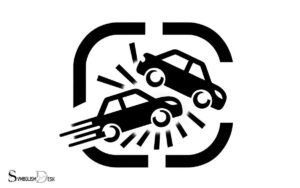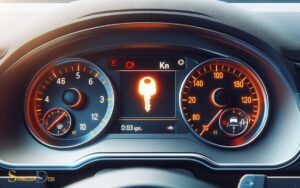Car Fluid Symbols Under Hood: Coolant!
The various car fluid symbols under the hood represent the different fluids that need to be monitored and maintained for your vehicle to operate smoothly.
These typically include symbols for engine oil, coolant, brake fluid, power steering fluid, and windshield washer fluid. Understanding these symbols is crucial for regular vehicle maintenance and can help prevent costly repairs.
When you open the hood of your car, you might notice several caps with symbols on them. These symbols are designed to quickly inform you about which fluid goes where.
Here’s a brief description of the common car fluid symbols:
It’s important to check these fluids regularly and refill as necessary to keep your vehicle running properly.
Regularly checking under the hood and understanding the car fluid symbols can save you from unexpected breakdowns and maintain your vehicle’s performance.
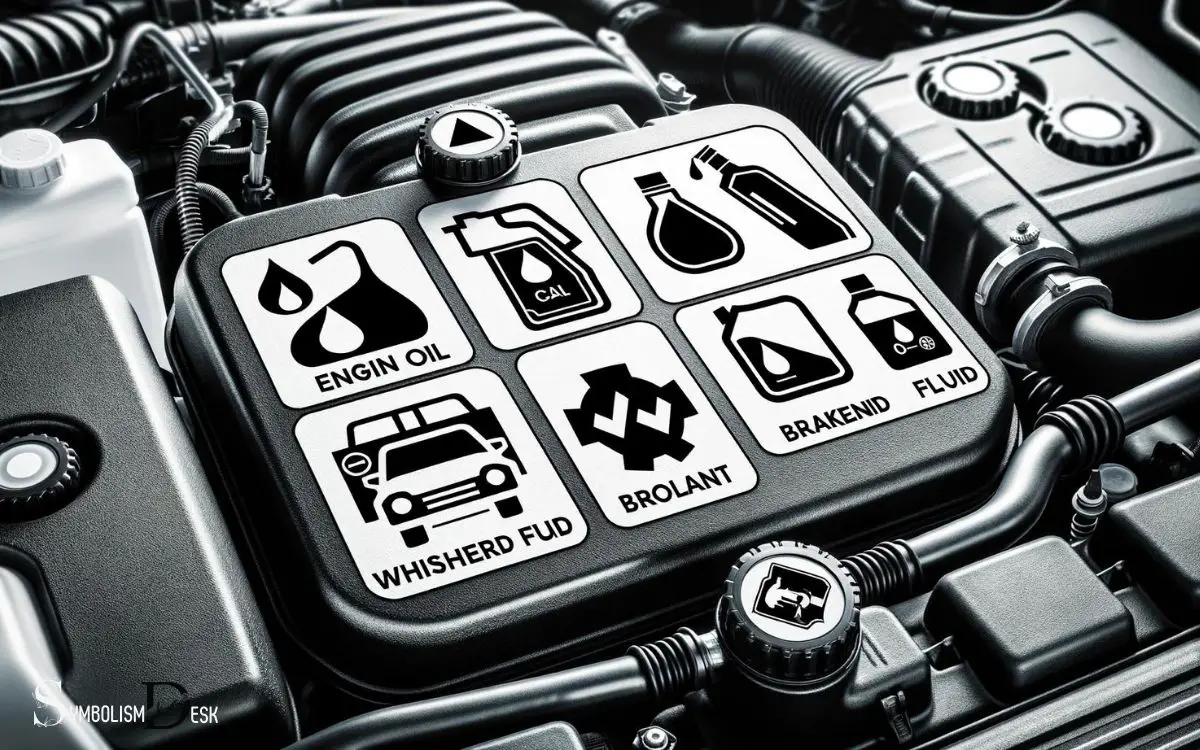
Key Takeaway
Importance of Fluid Symbols

The importance of fluid symbols under the hood is evident in their role as indicators of vital vehicle maintenance needs. These symbols serve as an early warning system, alerting drivers to potential issues with essential fluids such as oil, coolant, brake fluid, and transmission fluid.
By understanding and heeding these symbols, drivers can prevent serious damage to their vehicles and avoid costly repairs.
For example, a low oil pressure symbol could indicate a problem with the engine that, if ignored, could lead to catastrophic failure. Similarly, a high engine temperature symbol might signal a coolant leak or a failing radiator.
These symbols provide crucial information that enables drivers to address maintenance needs promptly, ensuring the continued smooth and safe operation of their vehicles.
Oil Symbol Meaning
When it comes to understanding the oil symbol under the hood of a car, it’s essential to grasp the meaning behind the various oil viscosity grades.
Additionally, knowing how to interpret the engine oil warning light is crucial for maintaining the vehicle’s performance. Furthermore, having a guide for oil change frequency is important to ensure the engine operates at its best.
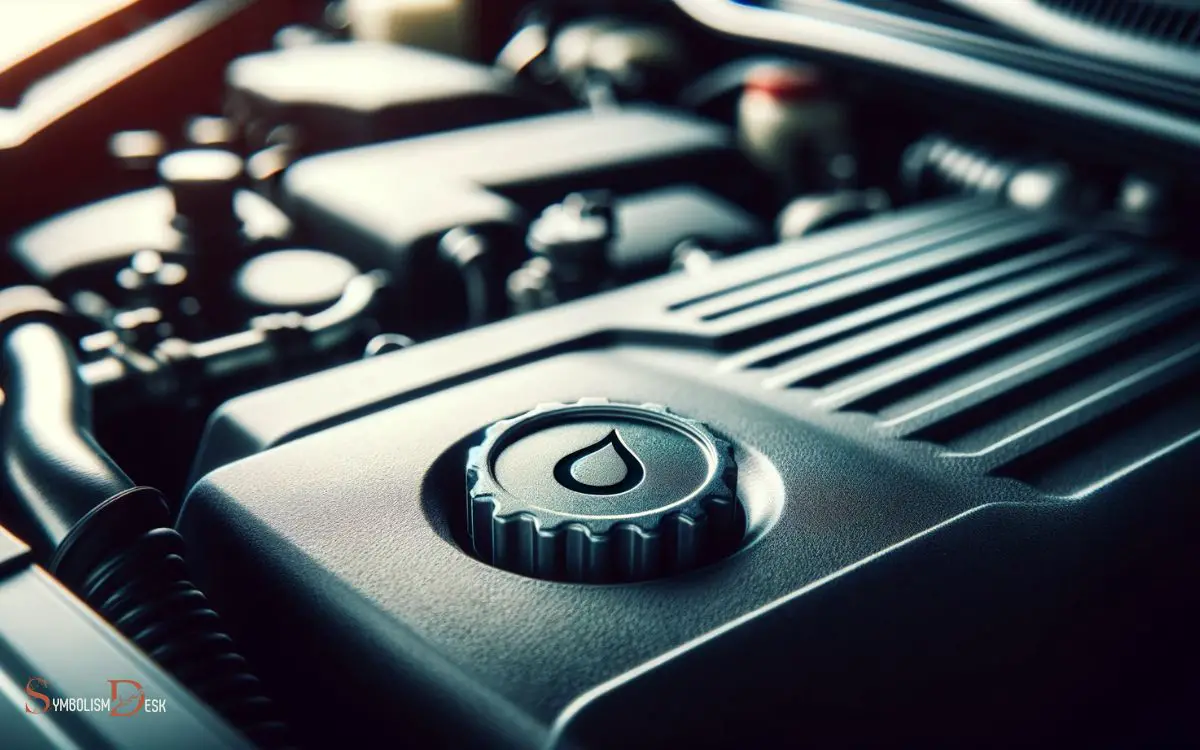
Oil Viscosity Grades Explained
Understanding oil viscosity grades is essential for maintaining a vehicle’s optimal performance.
Motor oil viscosity is represented by a numerical code, where the first number indicates the oil’s viscosity at lower temperatures and the second number represents viscosity at higher temperatures.
For instance, in a 10W-30 oil, the “10W” means the oil behaves like a 10-weight oil at cold temperatures, while the “30” means it acts like a 30-weight oil at high temperatures.
Here’s what to consider when deciphering oil viscosity grades:
- Lower viscosity oils (e.g., 5W) are thinner and flow more easily at lower temperatures, providing better cold start protection.
- Higher viscosity oils (e.g., 20W or 30W) are thicker and better suited for high temperatures and heavy loads.
- Multigrade oils (e.g., 10W-30) offer versatility in different temperature conditions, making them suitable for diverse driving environments.
Engine Oil Warning Light
Car owners must pay attention to the engine oil warning light, as it indicates potential issues with the oil level or pressure. When this light illuminates on the dashboard, it signals that the oil level may be low or that there is a drop in oil pressure.
Both scenarios can lead to serious damage to the engine if not addressed promptly. Low oil levels can result in insufficient lubrication, causing increased friction and heat within the engine.
On the other hand, decreased oil pressure may indicate a problem with the oil pump or a potential leak.
Therefore, it is crucial to check the oil level and pressure immediately and top up the oil if necessary. Ignoring this warning light can lead to costly engine repairs or even engine failure.
Oil Change Frequency Guide
The oil change frequency guide provides essential information about the meaning of oil symbols found in a car’s dashboard. Understanding the oil symbol meaning is crucial for maintaining the vehicle’s optimal performance.
Here are three key factors to consider:
- Manufacturer’s Recommendations: Consult the owner’s manual to determine the recommended oil change intervals for the specific make and model of the vehicle.
- Driving Conditions: Consider the driving habits and conditions. For vehicles subjected to frequent stop-and-go traffic, towing, or extreme temperatures, more frequent oil changes may be necessary.
- Oil Quality: Using high-quality oil can extend the time between oil changes. Synthetic oils typically have a longer lifespan compared to conventional oils.
Adhering to the oil change frequency guide helps ensure the engine operates efficiently and prolongs the lifespan of the vehicle.
Coolant Symbol Decoding
When interpreting coolant symbols under the hood, it is crucial to understand the coolant indicator lights and how to interpret coolant level symbols.
These indicators provide essential information about the status of the vehicle’s cooling system and should be monitored carefully to ensure optimal engine performance and prevent overheating.
Understanding these symbols can help drivers take appropriate action to maintain their vehicle’s cooling system. Understanding these symbols can help drivers take appropriate action to maintain their vehicle’s cooling system. For instance, recognizing the air recirculation symbol meaning can assist in optimizing the airflow within the car, especially in extreme weather conditions. Using this feature appropriately not only improves comfort but also helps reduce strain on the cooling system, contributing to the vehicle’s overall efficiency.
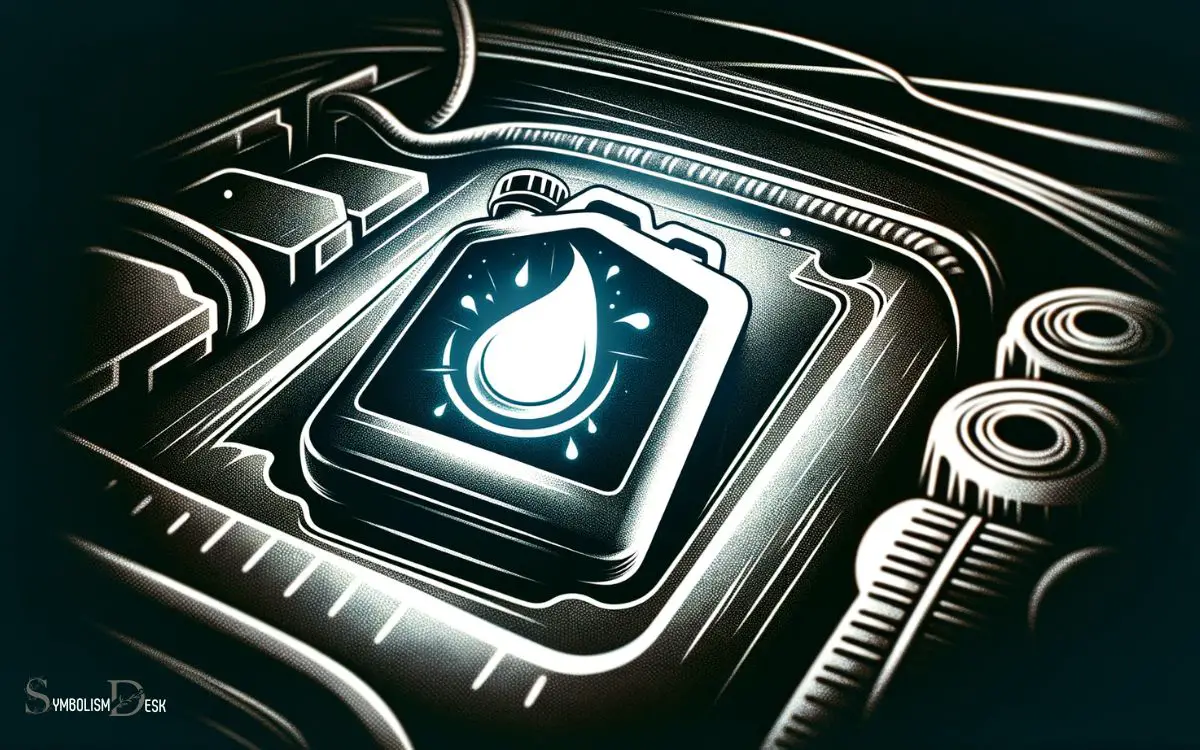
Understanding Coolant Indicator Lights
An important indicator light to understand under the hood is the coolant symbol, which alerts drivers to the status of the engine coolant.
When this light illuminates, it indicates a potential issue that requires attention. Understanding this indicator is crucial for maintaining the engine’s optimal temperature and preventing overheating.
To decipher the coolant symbol, drivers should consider the following:
- Check Coolant Level: Ensure that the coolant level is within the recommended range by consulting the vehicle’s manual.
- Inspect for Leaks: Look for any signs of leaks or seepage in the cooling system, such as puddles of coolant under the car.
- Monitor Temperature Gauge: Keep an eye on the temperature gauge to ensure the engine is not overheating despite the coolant level being adequate.
Interpreting Coolant Level Symbols
Interpreting coolant level symbols requires understanding the various indicators and their meanings. The coolant symbol on the dashboard typically resembles a thermometer or a wave-like symbol.
When this light illuminates, it indicates that the engine is running hot or that the coolant level is too low. Some vehicles have a separate low coolant indicator light. It’s crucial to interpret these symbols correctly and take appropriate action to prevent engine damage.
Drivers should refer to the vehicle’s manual to understand the specific symbols and their meanings.
Regularly checking the coolant level in the reservoir and ensuring it’s within the recommended range can help prevent overheating and maintain the engine’s optimal performance. Understanding these symbols is essential for vehicle maintenance and safe driving.
Understanding Brake Fluid Symbols
How do mechanics and car owners identify brake fluid symbols under the hood of a vehicle? Brake fluid reservoirs are typically marked with universally recognized symbols. These symbols indicate essential information about the brake system.
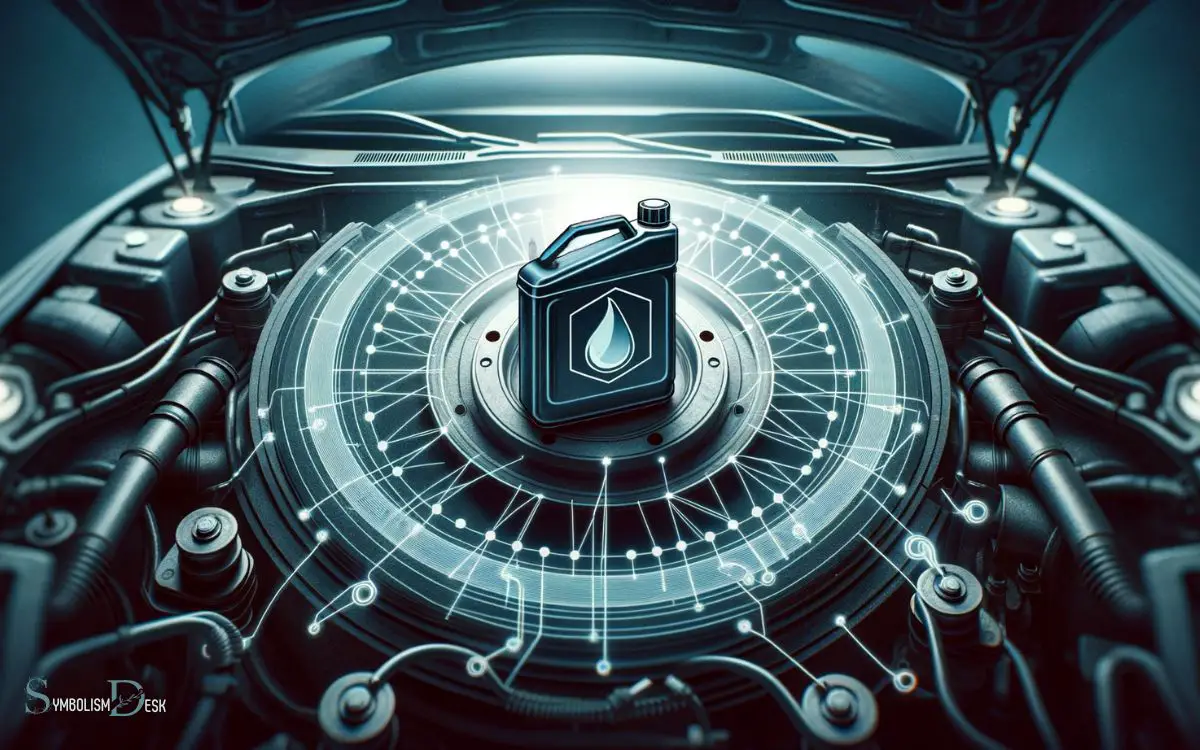
To understand these symbols, individuals should look for:
- The Brake Fluid Reservoir: It is usually a small, translucent plastic or metal container. The cap is often labeled with the word “brake fluid” or the brake symbol – a circle with an exclamation point in the center.
- Color-Coding: Brake fluid reservoirs may have color-coded caps or markings. Most vehicles use either a black or yellow cap, indicating the type of brake fluid required.
- Warning Symbols: Some modern vehicles feature electronic sensors connected to the brake fluid reservoir, triggering a dashboard warning light if the brake fluid level drops too low.
Power Steering Fluid Indicator
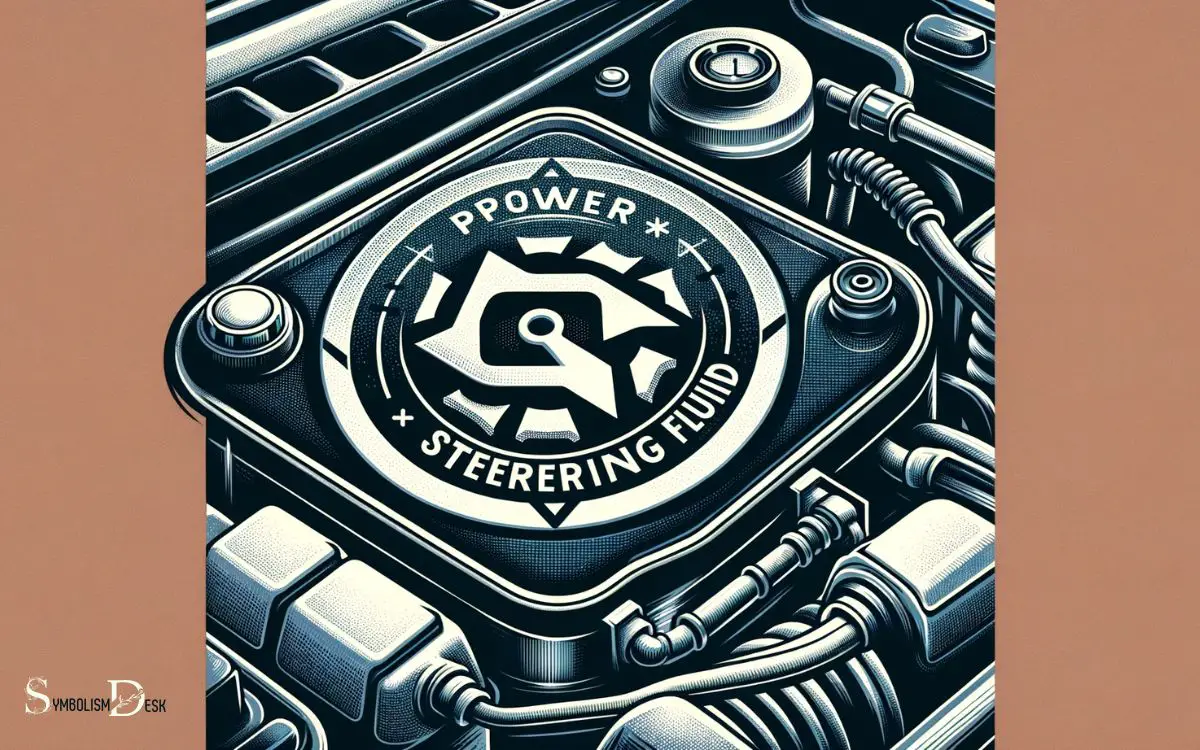
The power steering fluid indicator is typically denoted by a steering wheel symbol on the reservoir cap. This symbol signifies the location of the power steering fluid reservoir under the hood.
It is crucial to check the power steering fluid regularly to ensure proper functioning of the power steering system. The power steering fluid reservoir should be checked when the engine is cold. If the level is below the “minimum” mark, it indicates a potential leak or a need for fluid top-up.
Overfilling should be avoided, as it can lead to system malfunctions. Consult the vehicle’s manual to determine the correct type of power steering fluid to use. Regular maintenance of the power steering fluid is essential for smooth and responsive steering control.
Transmission Fluid Symbol Interpretation
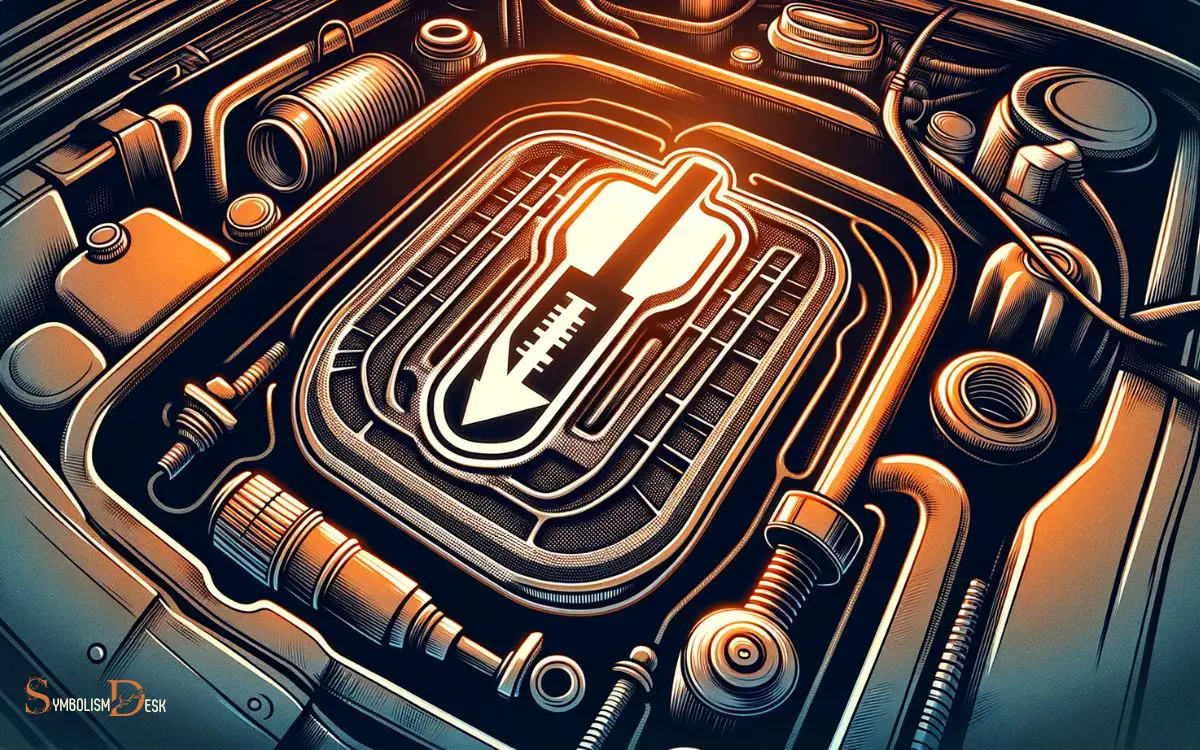
The symbol for the transmission fluid reservoir, often resembling a gear or cog, is typically located on the transmission dipstick or cap, indicating the importance of regularly checking the transmission fluid level as part of routine maintenance.
It’s essential for drivers to inspect the transmission fluid as part of their regular maintenance routine, ideally checking it during each oil change or at least annually.
- Color and Consistency: Transmission fluid should be transparent and reddish. Any discoloration or burnt smell may indicate a problem.
- Fluid Level: The transmission fluid level should be within the designated range on the dipstick to ensure proper functioning.
- Maintenance Schedule: Follow the manufacturer’s guidelines for transmission fluid changes to maintain optimal performance and prolong the lifespan of the transmission system.
Oil Symbol Car Under Hood
The symbol you’re referring to could be the oil pressure warning light on a car’s dashboard. This warning light looks like an oil can or an oil drop, and it typically illuminates when there’s a problem with the oil pressure in the engine.
If you see this warning light on your car’s dashboard, it’s essential to address the issue promptly. Low oil pressure can lead to engine damage and potentially result in costly repairs if not resolved in time.

Here are some common reasons why the oil pressure warning light might come on:
- Low Oil Level: The most common reason for low oil pressure is a low oil level in the engine. Check your oil dipstick to ensure there’s enough oil in the engine, and if it’s low, add oil as needed.
- Oil Leak: An oil leak can cause a drop in oil pressure. Check for any visible oil leaks under the car or around the engine.
- Oil Pump Failure: The oil pump is responsible for circulating oil throughout the engine. If it fails, it can lead to low oil pressure. This is a more serious issue that may require professional attention.
- Oil Filter Blockage: A clogged oil filter can restrict the flow of oil, leading to low oil pressure. Replacing the oil filter is a straightforward fix.
- Engine Wear: Over time, engine components can wear out, leading to increased clearance between parts and decreased oil pressure. This is a sign of engine wear and may require a rebuild or replacement.
- Faulty Oil Pressure Sensor: Sometimes, the oil pressure sensor itself can malfunction, causing the warning light to come on when there’s no actual problem with oil pressure. In this case, the sensor may need to be replaced.
If the oil pressure warning light comes on, it’s essential to take it seriously and have the issue diagnosed and repaired by a qualified mechanic. Ignoring low oil pressure can lead to severe engine damage and costly repairs.
Car Engine Symbols Under Bonnet
Under the bonnet (or hood) of a car, you’ll find various components and symbols that are part of the engine and its associated systems.
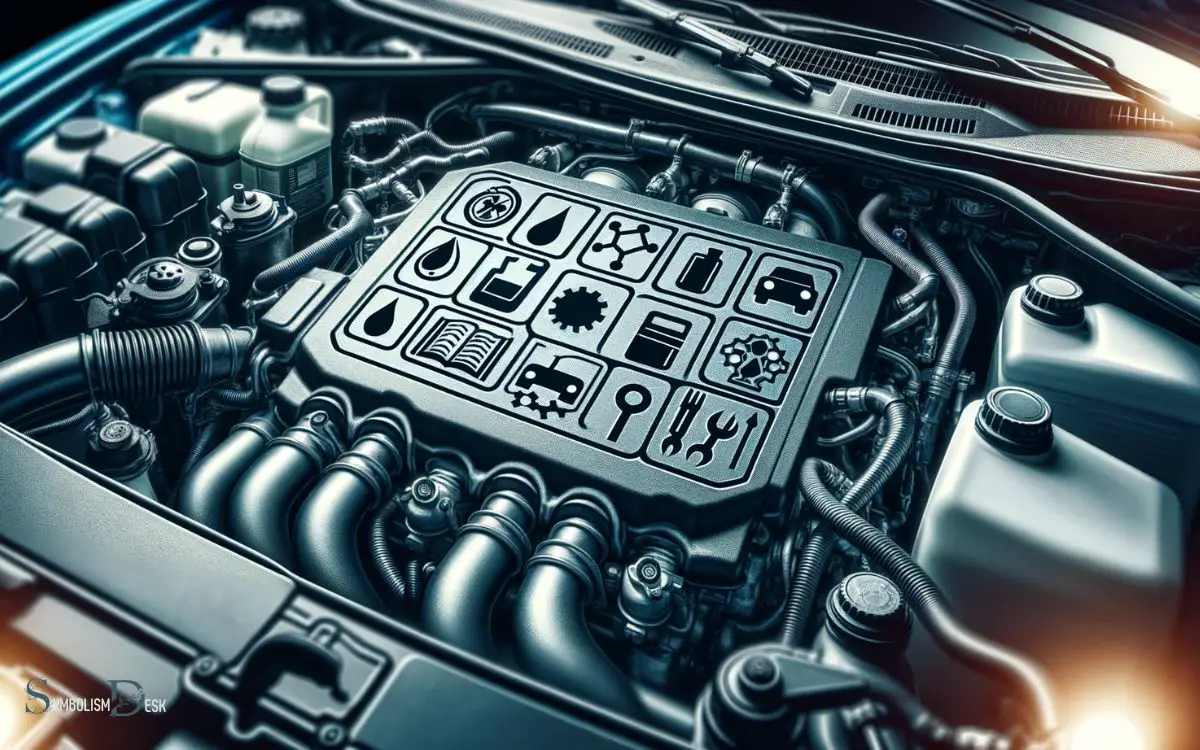
These components can include:
- Engine: The main component under the bonnet is the engine itself, which powers the vehicle. It can be a gasoline engine, diesel engine, electric motor, or hybrid powertrain.
- Battery: The car’s battery is usually located under the bonnet. It provides electrical power to start the engine and run various electrical systems in the vehicle.
- Radiator: The radiator is part of the cooling system and helps regulate the engine’s temperature by dissipating heat from the coolant. It may have a radiator cap symbol.
- Air Filter: The air filter cleans the air before it enters the engine to ensure that only clean air is used for combustion.
- Oil Cap: The symbol for the oil cap indicates where you can add engine oil. This is essential for lubricating engine components.
- Brake Fluid Reservoir: The brake fluid reservoir stores the brake fluid, which is used in the hydraulic brake system.
- Power Steering Fluid Reservoir: If your car has power steering, you may find a reservoir for power steering fluid. This fluid helps make steering easier.
- Windshield Washer Fluid Reservoir: The reservoir for windshield washer fluid stores the liquid used to clean the windshield.
- Coolant Reservoir: In addition to the radiator, there may be a coolant reservoir that holds extra coolant for the engine’s cooling system.
- Transmission Fluid Dipstick: If your car has an automatic transmission, you may find a dipstick for checking the transmission fluid level.
- Fuse Box: The fuse box contains fuses and relays that protect and control various electrical systems in the car.
- Brake Master Cylinder: The brake master cylinder is a critical component of the brake system, responsible for applying hydraulic pressure to the brakes when you press the brake pedal.
- Power Brake Booster: If your car has power brakes, you may find the power brake booster, which helps apply additional force to the brakes when you press the pedal.
- Engine Cover: Some vehicles have an engine cover or shroud that conceals the engine components for aesthetic and safety reasons.
These are some of the common symbols and components you might find under the bonnet of a car. The exact layout and components can vary depending on the make and model of the vehicle.
It’s essential to consult your car’s owner’s manual for specific information about your vehicle’s engine bay layout and components.
Conclusion
Understanding car fluid symbols under the hood is crucial for maintaining the health and performance of your vehicle. For example, a driver who ignores the oil symbol and neglects to change their oil regularly could end up with a seized engine, resulting in costly repairs.
By paying attention to these symbols and addressing any issues promptly, drivers can ensure their car runs smoothly and efficiently.



